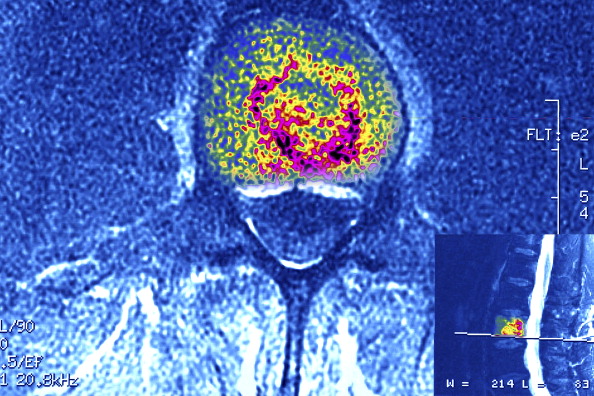Multiple Myeloma Statistics By Race: Colon Powell Cancer Kills Blacks More
Multiple Myeloma, The Cancer Colin Powell Had, Is A ‘Silent Killer’ Of Black People
Most of the headlines for news articles about Colin Powell‘s death included the fact that he died following complications from COVID-19. But buried deeper in the story is the fact that the war hero who was also the first Black U.S. secretary of state had been suffering from multiple myeloma, a cancer of the blood that disproportionately affects Black people.
The announcement of Powell’s death from his family also did not make any mention of multiple myeloma, but a viral Twitter thread has helped draw attention to what it called “a silent killer in the Black community.”

Multiple myeloma. | Source: BSIP / Getty
What exactly is multiple myeloma?
The type of blood cancer related to leukemia and lymphoma can’t be cured, although treatments that slow its spread do exist. Symptoms of the disease vary; for some people, there are no signs.
When symptoms do occur, they can include bone pain, especially in the spine or chest; confusion or mental fogginess; constipation; excessive thirst; fatigue; frequent infections; loss of appetite; nausea; weakness or numbness in your legs; and weight loss.
“Myeloma patients, they make a lot of antibodies. But, they only make one type. So their ability to make normal antibodies to fend off infections is impaired. They also have T-cell, or cellular immunity, defects that contribute to their inability not only to fight off infections, but mount effective responses to vaccines,” Dr. James Berenson, medical and scientific director of the Institute for Myeloma and Bone Cancer Research, told CBS News.
Risk factors
Powell’s elderly age of 84 years was among the top factors exacerbating his multiple myeloma prognosis, as the risk increases as people get older. Fewer than 1% of cases are diagnosed in those younger than 35. Most people diagnosed with multiple myeloma are 65 or older. The fact that he was a man didn’t help, either, as males are slightly more likely to develop this form of cancer than women.
But research suggests that race is tops among risk factors when it comes to being diagnosed with multiple myeloma.
African Americans are at an increased risk of being diagnosed with multiple myeloma—a rate that is “almost twice that of whites,” said Meghan Buzby of the International Myeloma Foundation. The reason for this disparity isn’t known.
Comparing white people and Black people suffering from multiple myeloma, a study published last year in the Blood Cancer Journal found “large racial disparities in all stages of the disease” and that Black people suffer from a “higher mortality rate, and have not experienced the same survival gains over time.”
To be sure, Black people have twice the risk of developing multiple myeloma that whites do and are diagnosed at younger ages than any other racial group
A lack of Black patients participating in clinical trials has limited the scope of research to determine why there is such a racial disparity when it comes to multiple myeloma, the study found. The survival rate from multiple myeloma, the study concluded, appears “to stem from inferior treatment utilization and access rather than underlying pathogenesis” — meaning that Black multiple myeloma patients don’t seek as much medical treatment, or any at all, compared to their white counterparts.
Powell was being treated for his multiple myeloma.
Socioeconomic status matters, sometimes
The study published in the Blood Cancer Journal found that “a low occupation-based” socioeconomic status “was significantly associated with an increased risk” of multiple myeloma. That was true as reports show that income inequality has been on the rise in recent years, although Asians have replaced Blacks as the most economically divided group in the U.S.
However, another study found the opposite to be true in regard to a correlation between socioeconomic status, race and multiple myeloma. When it comes to Black women, in particular, they have twice the risk of multiple myeloma than white women do regardless of “educational attainment and annual household income.”
This is partially why it remains unclear why Black people disproportionately suffer from multiple myeloma.
Other factors that increase the risk for multiple myeloma include obesity, family history, exposure to radiation and having other plasma cell diseases.
‘a silent killer in the Black community’
Writer Rebecca Theodore-Vachon, a Black woman, posted a Twitter thread on Monday following the news of Powell’s death to reveal her personal battle with multiple myeloma. She suggested her prognosis had improved in recent years but also emphasized how physically and mentally painful battling the disease has been for her.
“…all to say multiple myeloma is a silent killer in the Black community,” Theodore-Vachon tweeted. “Please read up on this disease and talk to your doctors if you have any of the symptoms presented.”
SEE ALSO:

















